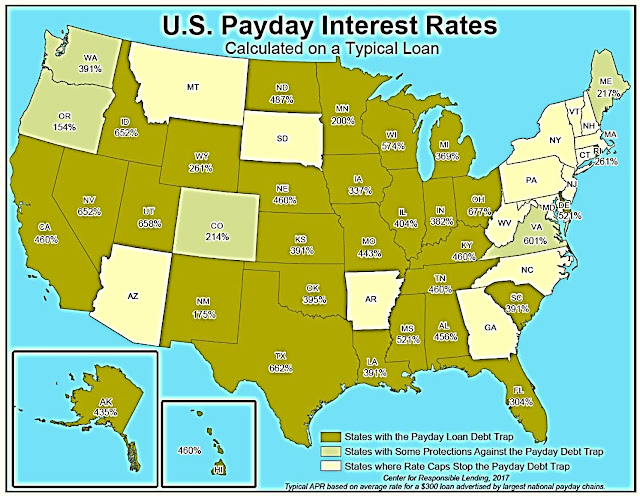Quick Cash at a HIGH COST!
While payday loans provide quick cash, the national average annual percentage rate is almost 400 percent, over 600 percent in some states. In contrast, the average credit card APR in July was 16.96 percent.
Payday loans, also called cash advances, are typically small loans you can get in most states by walking into a store with a valid ID, proof of income and a bank account. The balance of the loan, along with the "finance charge" (the service fees and interest), is typically due two weeks later, on your next pay day.
Across the U.S., there are approximately 23,000 payday lenders almost twice the number of McDonald's restaurants. Not to mention the many online lenders that have cropped up. While 15 states and the District of Columbia have laws in effect that cap the interest of these loans at 36 percent or less, 35 other states have no such restrictions.
Source: CNBC.com
While payday loans provide quick cash, the national average annual percentage rate is almost 400 percent, over 600 percent in some states. In contrast, the average credit card APR in July was 16.96 percent.
Payday loans, also called cash advances, are typically small loans you can get in most states by walking into a store with a valid ID, proof of income and a bank account. The balance of the loan, along with the "finance charge" (the service fees and interest), is typically due two weeks later, on your next pay day.
Across the U.S., there are approximately 23,000 payday lenders almost twice the number of McDonald's restaurants. Not to mention the many online lenders that have cropped up. While 15 states and the District of Columbia have laws in effect that cap the interest of these loans at 36 percent or less, 35 other states have no such restrictions.
Source: CNBC.com



Comments
Post a Comment